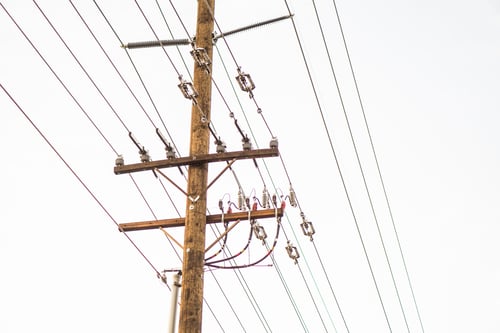
AV Trends 2019: Understanding the Smart Environment
Another trend we recently discussed – and perhaps the most significant outcome of the ongoing tech convergence – is the rapid rise of the smart environment. How fast the smart environment becomes your new norm rests entirely on your organization’s ability and willingness to embrace the Internet of Things (IoT).
IoT essentially creates a conduit connecting otherwise disparate technologies in a manner that enables smooth transitions and truly immersive experiences. While to many IoT has seemed like a futuristic dream, its growth has been underway for a number of years, usually behind the scenes.Utilities are a prime example. For instance, Chattanooga, TN-based EPB’s (the city owned power company) decision to invest in the deployment of fiber and sensors across its entire 600 square miles coverage area. This investment enabled EPB to gather data on power line performance on a real-time basis. Any data irregularities automatically prompt the utility to reroute electrical distribution, often avoiding situations that would have previously resulted in outages. This use of IoT capabilities is not something consumers see, but it is vital to ensuring a safe environment without unnecessary power outages. EPB reduced the incidence and duration of power outages by more than 50 percent. For a market the size of EPB’s service area, this is equivalent to saving its customers more than $50 million per year by helping them avoid lost productivity, spoiled food and other negative impacts. 
Fortunately, IoT’s potential is starting to gain consumer recognition as well. With the continued infusion of drones, robots and other user-facing technologies, the long-term impact is becoming increasingly noticeable. For consumers, the adoption of smart home technologies has increased acceptance and excitement around smart environments.
For example, smart home technology has the ability to recognize when you are close to home, and as a result adjusts the temperature, unlocks the door, turns on the music and changes light settings all in accordance with your learned preferences. While having all of these technologies in place initially creates excitement, they ultimately create a smart environment that becomes the user’s new normal.
Let’s go back to the EPB example. Adding audiovisual (AV) technology to the mix allows the utility to go multiple steps further. For instance, as the system returns and processes data, it can stream findings in a dashboard fashion to provide actionable insights. With strategically placed cameras, control room personnel can explore the area of concern to find out more details around why performance is suffering. Specifically, a deeper dive may point out that a fallen tree branch is resting on a distribution line – thus prompting control room personnel to dispatch a service crew to clear the line of debris.
Likewise, such a deployment could instantly bring control room personnel on the next shift up-to-speed with current developments, eliminating the potential for errors and omissions possible when an employee at the end of their shift is turning over control.
The potential to further expand the smart environment is phenomenal. For example, with fiber, sensors and cameras in place, control room operators can go beyond monitoring powerlines to seamlessly rerouting traffic to avoid accident scenes or road hazards.
Of course, smart environments of this nature do not just happen. They rely heavily on having constant access to consistent network connectivity, the ability to utilize data engines to process and provide information that is both real-time and meaningful to the intended audience, as well as the proper utilization of sensors, cameras and displays capable of collecting and outputting content in a manner that’s natural.
This post is one of a five-part series taking a deeper dive into the impactful trends we identified at the beginning of the year. Follow these links to learn more about each of the trends impacting the audiovisual industry today:
AV Trends 2019: Understanding the Smart Environment
AV Trends 2019: Recognizing Platform Evolutions
AV Trends 2019: Two Ways Security and AV go Hand-in-Hand
AV Trends 2019: Constant Convergence is Here to Stay. And Why it Matters
AV Trends 2019: The Future of AV Starts with Self-Generating Content
Yiannis Cabolis
Yiannis Cabolis, Director of Technology Innovation at Electrosonic, shares the inside track on how technology drives innovation. He brings 30 years’ experience monitoring emerging technologies, developing best practices and driving Research and Development to solve challenges and help clients understand how to benefit from the latest engineered technology solutions.










.jpg?width=1500&height=995&name=ELC501_N17_medium%20(1).jpg)








































































































































































































